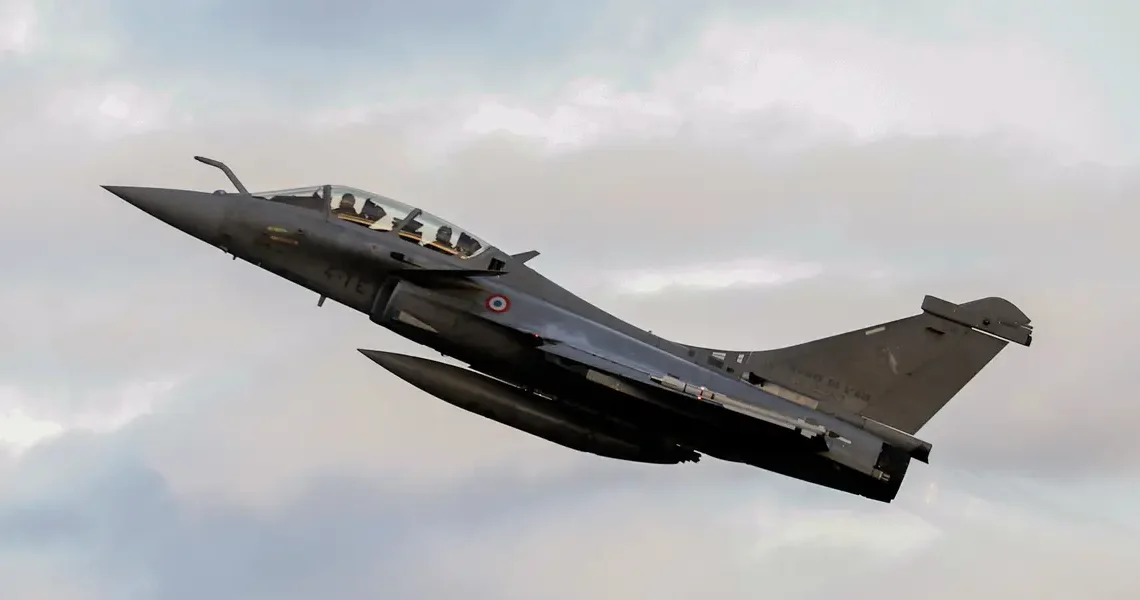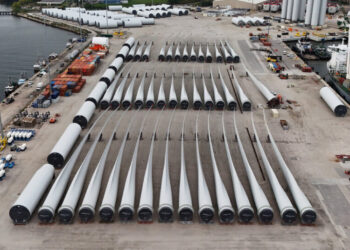It’s official: The Rafale F4 is set to be the third pillar of Ukraine’s new fighter fleet.
Ukrainian President Volodymyr Zelenskyy announced on Monday that Kyiv has signed a letter of intent to acquire up to 100 of the French fighter jets over the next 10 years.
Under the new arrangement, Ukraine is also allowed to receive advanced French radars and eight French-Italian Surface-to-Air Missile Platform/Terrain air defense systems, each equipped with six launchers.
“This is a historic agreement. It is of great value that France is taking such a step toward achieving real, guaranteed security in Europe,” Zelenskyy said.
The agreement complements other commitments for his country to obtain the US-made F-16 and Sweden’s Gripen, making the trio the likely backbone of its future air force.
The Ukrainian president said in August that his country was aiming for its next fighter fleet to be fully Western for “full NATO integration.” Kyiv’s air force now operates primarily older Soviet-designed fighters, supplemented by a limited number of Western airframes acquired since Russia’s full-scale invasion began in 2022.
Sweden, France, and the US were publicly earmarked as source countries for Ukraine’s new fighters, but the types of aircraft and their expected quantities were only revealed in recent weeks.
Europe’s new fighters
Kyiv also signed a letter of intent with Sweden on October 22 to buy up to 150 JAS 39 Gripen E fighter jets.
Meanwhile, Ukrainian pilots are already flying Lockheed Martin F‑16 Fighting Falcons donated by European NATO members, along with several French Dassault Mirage 2000 fighters. Both are upgraded fourth-generation aircraft, and Ukraine has said it eventually needs a total of 128 F-16s to defend itself against Russia.
The Rafale and Gripen, however, would be a step up in modern capabilities for Ukraine.
Considered 4.5-generation aircraft, they’re equipped with advanced avionics, sensors, and electronic warfare systems but lack the powerful full-stealth capabilities of the 5th-generation F-35 Lightning II and F-22 Raptor.
Saab’s Gripen has widely been touted as one of Ukraine’s best options against Russia. Designed to fly from small, rough airstrips and require minimal maintenance, the Gripen is meant to be easily dispersible in a war where critical infrastructure would constantly be under bombardment.
The E variant is the Gripen’s latest version, with an upgraded single engine and new electronic warfare systems. With a takeoff weight of 16.2 tons, it offers 10 weapons hardpoints for missiles and bombs.
The twin-engine Dassault Rafale F4, meanwhile, has 14 hardpoints with a takeoff weight of 24.5 tons. The F4 variant entered French operational service in early 2024.
Still, Kyiv’s announcements so far are just initial agreements to purchase these modern fighters, and actual deliveries would depend on finalized export deals.
Delays and complications in fighter jet production are common, and Ukraine will also be joining a queue of clients waiting for their Rafales and Gripens. Sweden itself only received its first Gripen E last month, under a plan to field 60 of the new variants by 2030.
Dassault, meanwhile, makes fewer than four Rafales a month and said in October that it has a backlog of 233 of the aircraft to deliver.
Read the original article on Business Insider
The post The future of Ukraine’s air force is taking shape appeared first on Business Insider.




